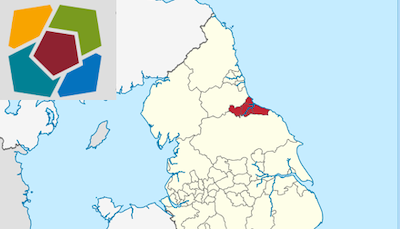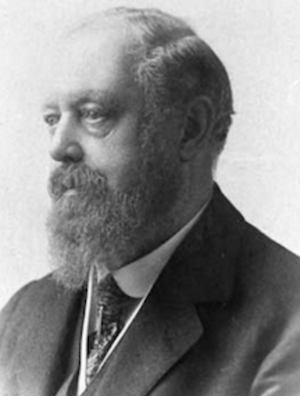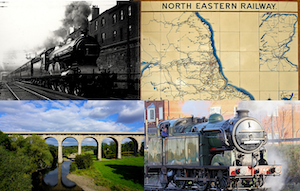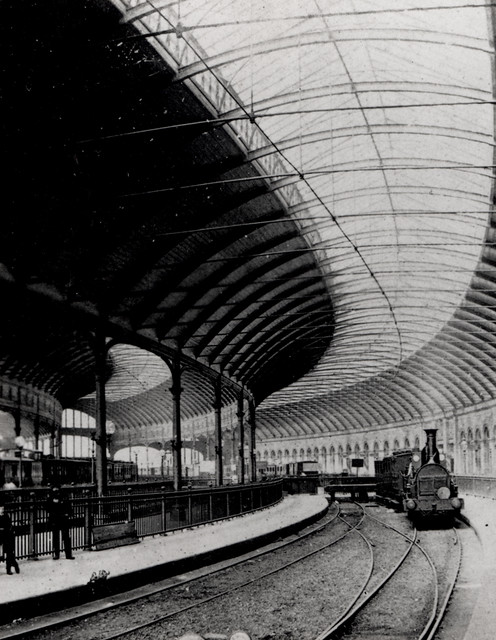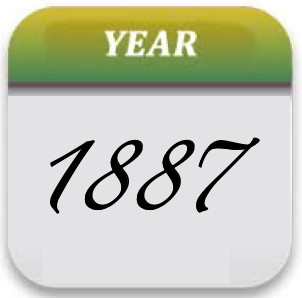Topics > Tees Valley > Darlington > Darlington Railway Station
Darlington Railway Station
Darlington railway station is on the East Coast Main Line in the United Kingdom, serving the town of Darlington, County Durham. It is 232 miles 50 chains (374.37 km) north of London King's Cross and on the main line it is situated between to Northallerton the south and Durham to the north. Its three-letter station code is DAR.
The station is well served, since it is an important stop for main line services, with trains being operated by London North Eastern Railway, CrossCountry and TransPennine Express, and it is the interchange for Northern services to Bishop Auckland, and Saltburn.
Darlington is the location of the first commercial steam railway: the Stockton and Darlington Railway. The station building is a Grade II* listed Victorian structure and winner of the "Large Station of the Year" award in 2005.
History
The first railway to pass through the area now occupied by the station was built by the Stockton and Darlington Railway, who opened their mineral branch from Albert Hill Junction on their main line to Croft-on-Tees on 27 October 1829. This branch line was subsequently purchased by the Great North of England Railway a decade later to incorporate into their new main line from York which reached the town on 30 March 1841. A separate company, the Newcastle & Darlington Junction Railway continued the new main line northwards towards Ferryhill and Newcastle, opening its route three years later on 19 June 1844. This crossed the S&D at Parkgate Junction by means of a flat crossing which would in future years become something of an operational headache for the North Eastern Railway and LNER. The original Bank Top station where the two routes met was a modest affair, which was rebuilt in 1860 to accommodate the expanding levels of traffic on the main line. By the mid-1880s even this replacement structure was deemed inadequate and so the NER embarked on a major upgrade to facilities in the area. This included an ornate new station with an impressive three-span overall roof on the Bank Top site, new sidings and goods lines alongside it and a new connecting line from the south end of the station (Polam Junction) to meet the original S&D line towards Middlesbrough at Oak Tree Junction near . These improvements were completed on 1 July 1887, when the old route west of Oak Tree closed to passengers (although it remained in use for freight until 1967).
The new station, with its broad island platform was designed by T.E. Harrison chief engineer, and William Bell, the architect of the North Eastern Railway. and cost £81,000 (equivalent to £8,850,000 in 2018) to construct and soon became a busy interchange on the main East Coast route, thanks to its rail links to Richmond (opened in 1846), and Barnard Castle and Penrith (1862/5) and the Tees Valley Line to (1842) and (1861).
The lines to Penrith (closed in 1962), Barnard Castle (1964) and Richmond (1969) have now gone (along with the bays at the northern end of the station, now used for car parking), but the main line (electrified in 1991) and the Tees Valley route remain busy. It is also still possible to travel to Catterick Garrison and Richmond from here, by means of the Arriva North East-operated X26 and X27 buses (which have through National Rail ticketing arrangements). The same company also operated the Sky Express bus service to Durham Tees Valley Airport from the station, but this was withdrawn in January 2009 due to declining demand.
In the 1980s a replica set of Darlington Railway Station was built for an episode of Noel's Saturday Roadshow for the BBC.
Station masters
- Thomas Waldie 1840 - 1866
- Robert Wood 1867 - 1873
- Richard Thompson 1874 - 1878
- James Bell 1878 - 1900
- Thomas William Smith 1900 - 1902 (afterwards station master at Sunderland)
- G.H. Stephenson 1902
- George W. T. Laidler 1902 - 1907
- W.M. Seymour ???? - 1912
- T. Pearce 1912 - 1920
- Irving Richard Beeby MBE 1920 - 1931
- Edwin Weavers 1932 - 1941 (formerly station master at Middlesbrough)
- Thomas Allen 1942[16] - 1949 (formerly station master at Sunderland)
- W. Lake 1950
- W.H. Campbell 1950 - 1952 (afterwards station master at Newcastle)
- W.J. Thomas 1952 - 1956
- George Renton 1956
- N. Darby 1963 - ????
- T. Hutchinson 1965
- S.F. Potts 1965 - ????
Accidents and incidents
- On 16 November 1910, an express freight train overran signals and was involved in a rear-end collision with another freight train.
- On 27 June 1928, a parcels train and an excursion train were involved in a head-on collision. Twenty five people were killed and 45 were injured.
- On 11 December 1968, a Newcastle to Kings Cross express train was derailed at the south end of the station after passing a signal at danger. No-one was hurt.
- On 3 October 2009, a Class 142 unit, operated by Northern Rail, hit the rear end of a departing National Express East Coast service. Three passengers from the Northern Rail train were taken to hospital with minor injuries.
Facilities
As noted previous, the station is fully staffed; the ticket office is open throughout the week (06:00-20:00/21:00 weekdays, 06:30-19:45 Saturdays, 07:45-20:00 Sundays). There is a waiting room and a first class Lounge on the platform, with the lounge open between 06:00 and 20:00 each day (except Sundays, when it opens at 08:00). Self-service ticket machines are also provided for use outside the opening hours for the booking office and for collecting pre-paid tickets. Various retail outlets are located in the main buildings, including a coffee shop, grocers and newsagents. Vending machines, toilets, a photo booth, payphone and cash machines are also provided. Train running information is offered via digital CIS displays, announcements and timetable posters. Step-free access to all platforms is via ramps from the subway linking the platforms with the main entrance and car park.
Services
Darlington is well served by trains on the East Coast Main Line, with regular trains southbound to London King's Cross via and northbound to Newcastle and Edinburgh Waverley operated by London North Eastern Railway. Two trains per hour run south to London and north to Newcastle for much of the day with hourly services to Edinburgh Waverley. There are also several daily services to and also daily direct services to Stirling (two) and (one).
Due to the introduction of the new ECML timetable on 22 May 2011, LNER only now provide one daily direct service each way between London King's Cross and Glasgow Central which calls at Darlington. The northbound service to Glasgow departs Darlington at 18:09 and the southbound service from Glasgow arrives into Darlington at 10:00.
CrossCountry services between Edinburgh, Newcastle and Birmingham New Street and beyond to ( and and to Bristol Temple Meads, , and ) also call here twice each hour, along with TransPennine Express trains between Newcastle and Liverpool Lime Street or via York, and Manchester Victoria. The Liverpool service was introduced at the May 2014 timetable change in place of the former route to/from Manchester Airport, but since the May 2018 timetable change trains now run to both destinations from here. Certain CrossCountry trains extend beyond Edinburgh to Glasgow Central, Dundee or Aberdeen.
Northern run their Tees Valley line trains twice hourly to , Redcar and Saltburn (hourly on Sundays), whilst the branch has a service every hour (including Sundays). The company also operates two Sundays-only direct trains to/from Stockton and .
Platforms
Darlington railway station has five main platforms:
- Platform 1: This is the main southbound platform, with, in order of frequency, London North Eastern Railway services to York and London King's Cross, CrossCountry services to Reading and Southampton or Birmingham and Plymouth, via York and Leeds, TransPennine Express services to Manchester Piccadilly and Manchester Airport or Liverpool Lime Street, via York and Leeds, and Northern services to Saltburn via Middlesbrough, from Bishop Auckland.
- Platforms 2 and 3: These platforms are south-facing bays used exclusively by Northern services terminating at Darlington from Saltburn and Middlesbrough. Platform 2 is used most frequently.
TransPennine Express trains also terminate in Platform 3 when there are delays in order to allow them to run their southbound services back on time.
- Platform 4: This is the main northbound platform, with, in order of frequency, London North Eastern Railway services to Newcastle, Edinburgh and Glasgow, CrossCountry services to Newcastle, Edinburgh and Glasgow, TransPennine Express services to Newcastle and Northern services to Bishop Auckland.
- Platform 4a: This is a southern extension of platform four catering for trains waiting at Darlington such that they can be bypassed by trains stopping at platform 4. It is the only platform that is not under the station roof. It is used predominantly by Northern services for Bishop Auckland.
Future
As part of the Tees Valley Metro, two new platforms were to be built on the eastern edge of the main station. There were to be a total of four trains per hour, to and Saltburn via the Tees Valley Line, and trains would not have to cross the East Coast Main Line when the new platforms would have been built. The Tees Valley Metro project was, however, cancelled.
Services on the Bishop Auckland branch are also to be improved to hourly throughout the day, as part of the new Northern franchise (awarded to Arriva Rail North in December 2015) from the December 2017 timetable change.
High Speed 2
The new high speed rail project in the UK, High Speed 2, is planned to run through Darlington once Phase 2b is complete and will run on the existing East Coast Main Line from York and Newcastle. Darlington Station will have two new platforms built for the HS2 trains on the Main Line, as the station is built just off the ECML to allow for freight services to pass through.
HS2 Phase 2b is scheduled to start running in late 2033.
Visit the page: Darlington railway station for references and further details. You can contribute to this article on Wikipedia.

from Geograph (geograph)
A short-term carpark, Darlington Bank Top Station
Pinned by Simon Cotterill
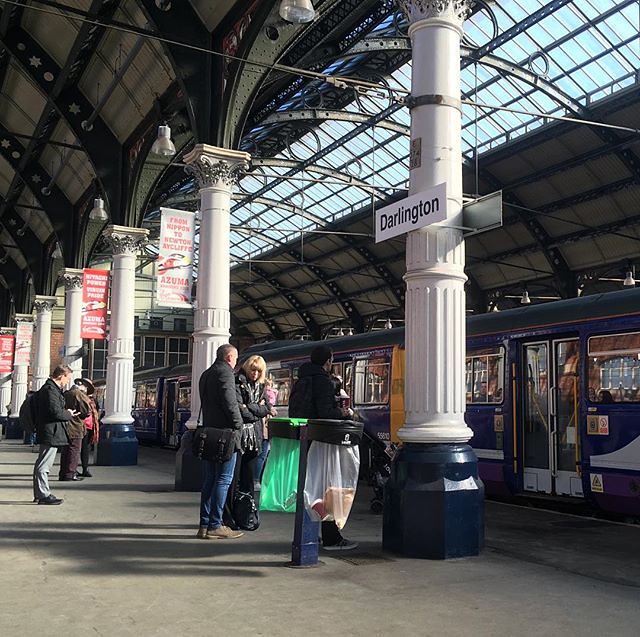
from Flickr (flickr)
At historic Darlington station about to board a historic looking diesel railbus to Middlesbrough... Apparently the line still follows the actual route of the world's first public steam railway - the Stockton & Darlington - opened in 1825. Now there's hist
Pinned by Peter Smith
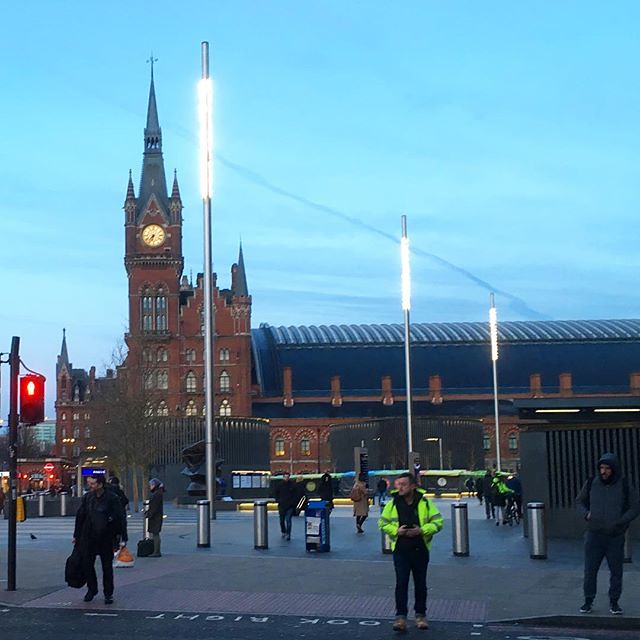
from Flickr (flickr)
7am heading north to visit @raphael.doyle in #Middlesbrough
Pinned by Peter Smith
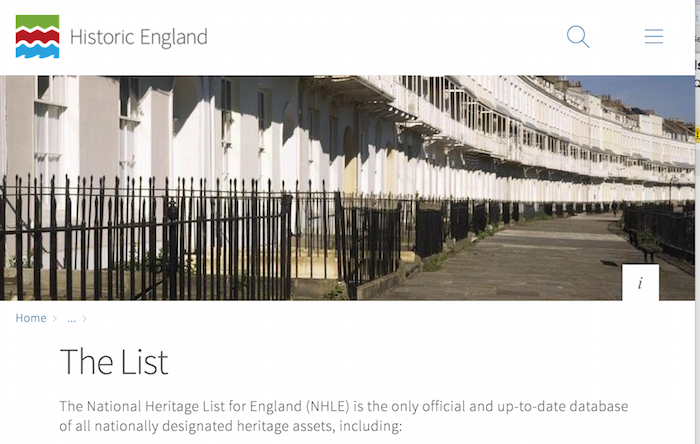
from https://historicengland.org.u…
BANK TOP RAILWAY STATION (MAIN BUILDING) - Darlington - List Entry
- "Railway station. 1887. William Bell. Imposing composition with some Italianate detail. Tall central clock tower of 4 stages with crested pyramidal roof. Red brick with plentiful stone dressings. Two-bay flanking …
Added by
Simon Cotterill

from Geograph (geograph)
Darlington (Bank Top) railway station, County Durham
Pinned by Simon Cotterill


from Geograph (geograph)
A short-term carpark, Darlington Bank Top Station
Pinned by Simon Cotterill

from Flickr (flickr)
At historic Darlington station about to board a historic looking diesel railbus to Middlesbrough... Apparently the line still follows the actual route of the world's first public steam railway - the Stockton & Darlington - opened in 1825. Now there's hist
Pinned by Peter Smith

from Flickr (flickr)
7am heading north to visit @raphael.doyle in #Middlesbrough
Pinned by Peter Smith

from https://historicengland.org.u…
BANK TOP RAILWAY STATION (MAIN BUILDING) - Darlington - List Entry
- "Railway station. 1887. William Bell. Imposing composition with some Italianate detail. Tall central clock tower of 4 stages with crested pyramidal roof. Red brick with plentiful stone dressings. Two-bay flanking …
Added by
Simon Cotterill

from Geograph (geograph)
Darlington (Bank Top) railway station, County Durham
Pinned by Simon Cotterill


























